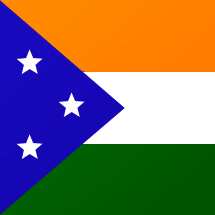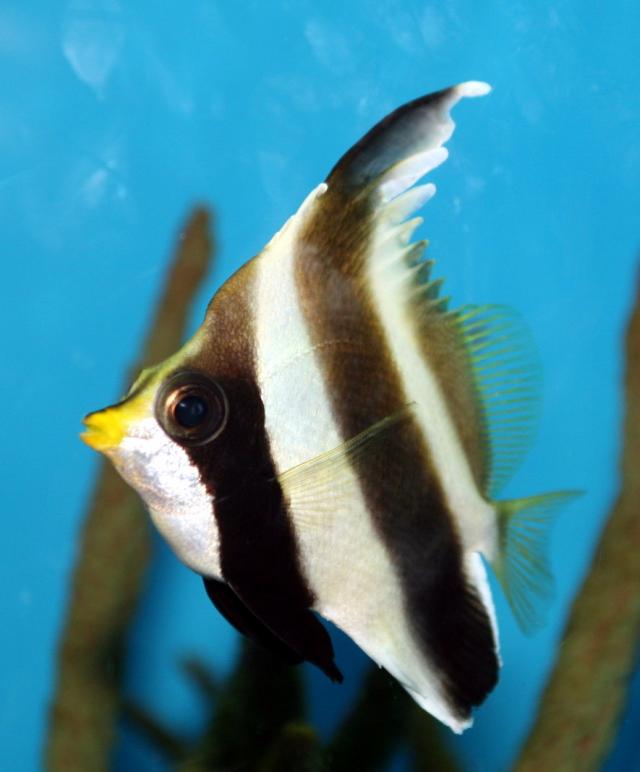

 English
EnglishThe Mokilese Talking Dictionary currently has 1070 entries, with 727 audio files and 62 images.
This image gallery has returned 55 entries.

 apid
apid
[ apid ]
n three wooden poles on either side of and parallel to the two kia that make up the connection between the canoe and the outrigger
 dokange
dokange
n large lizard introduced by the Japanese to Mokil Atoll; may possibly be a Mangrove Monitor (Varanus indicus)

 elmoan
elmoan
noun mangrove crab
Example: Mangrove Boardwalk, Burleigh Heads, Gold Coast, South Queensland, AUSTRALIA by Bernard Dupont, 2000, CC BY-SA 2.0, via Wikimedia Commons

 id
id
noun eel
Example: Snowflake moray, Echidna nebulosa in Kona, Island of Hawaii, Hawaii, United States by Brocken Inaglory, 2008, CC-BY-SA-3.0, via Wikipedia

 jimw
jimw
[ t͡ʃimʷ ]
n the rail on top of the canoe; above the kapwidpwid; prevents water from entering the canoe

 jimwin rehl
jimwin rehl
[ t͡ʃimʷen re:l ]
n the rail on top of the canoe and near the front end; above the kapwidpwid; prevents water from entering the canoe

 kapwidwid
kapwidwid
[ kapʷʉdpʷʉd ]
n a ridge sticking out from the sides of a canoe that protects the inside of it from high waves

 kehrup
kehrup
[ ke:rup ]
n a wooden ridge below the canoe that protects the bottom from coral and keeps the canoe steady in the water

 keinin ere
keinin ere
[ keinin eɾe ]
n wooden poles the run perpendicular to the apid and kia, on the connection between the canoe and the outrigger

 kia
kia
[ kia ]
n the two wooden poles in the middle of the connection between the canoe and the outrigger
 kihl
kihl
[ ki:l ]
n small wooden ridge underneath either side of a canoe, as well as underneath an outrigger, to protect the bottom

 koasoa
koasoa
[ kɔsɔ ]
n a trapezoidal piece of wood on the side of the canoe farther from the outrigger that connects the canoe and the poang

 loahn joahmwur
loahn joahmwur
[ lɔ:n jɔ:mʷur ]
n where the line holding down the sail is tied; near the end of the canoe but before the repiakiak
 marmar
marmar
n traditional circlet used as a sign of welcome; generally made of flowers and/or palm leaves

 nambwo
nambwo
noun pennant bannerfish
Example: Pennant Bannerfish (Heniochus chrysostomus) by Cliff, 2008, CC BY 2.0, via Flickr

 opup
opup
noun coconut crab
Example: Crancs dels cocoters a Bora-Bora. by Brocken Inaglory, 2006, CC BY-SA 3.0 via ca.wikipedia.org
 pahj
pahj
[ pa:t͡ʃ ]
n a sitting place on the edge of the canoe, on top of the connection between the canoe and the outrigger

 pohp
pohp
noun clown triggerfish
Example: Balistoides conspicillum, Balistidae, Clown Triggerfish; Staatliches Museum für Naturkunde Karlsruhe, Germany. by H. Zell, 2009, CC-BY-SA 3.0, via Wikimedia Commons
 pwij
pwij
[ pʷit͡ʃ ]
n a wooden pole that sits above and paralell to the outrigger, on top of the kia; keeps the outrigger flexible
 wahn pwij
wahn pwij
[ wa:n pʷit͡ʃ ]
n two wooden poles that sit vertically on top of the outrigger and connect to the kia
All content copyright © Mokilese community. (2013)
Dictionary produced by Danio Poll, Jason Lebehn, Monique Panaligan, Gregory D. S. Anderson and K. David Harrison. (2013).
Supported in part with funding from a NSF REU Site grant (PI Harrison, Building Digital Tools to Support Endangered Languages and Preserve Environmental Knowledge in Mexico, Micronesia, and Navajo Nation, Award #1461056).
Any opinions, findings, and conclusions or recommendations expressed in this material are those of the author(s) and do not necessarily reflect the views of the National Science Foundation.
All rights reserved. Do not distribute or reproduce without permission.
how to cite:
Anderson, Gregory D.S., Danio Poll, Jason Lebehn, Monique Panaligan and K. David Harrison. 2014.
Mokilese Talking Dictionary.
Living Tongues Institute for Endangered Languages.
http://www.talkingdictionary.org/mokilese